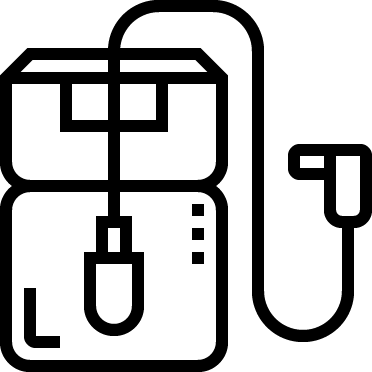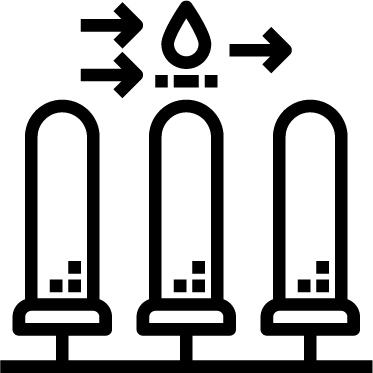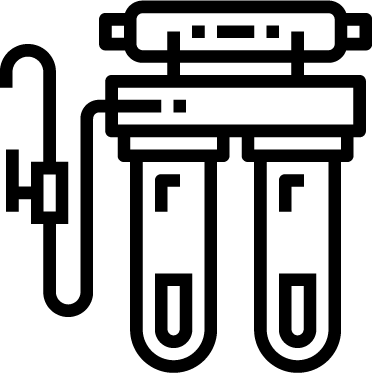If you’re in the market for an industrial energy transfer (ETP) plant, you’ll want to be aware of the different types of plants that are available. This article will provide you with everything you need to know about industrial ETP plants, including the benefits and features of each type. We’ll also discuss the different types of plant installations and how they are used. So if you’re looking for a plant that can handle your energy needs, this is the article for you!
What is the industrial effluent treatment?
An industrial effluent treatment plant (ETP) is a facility that’s used to treat industrial wastewater. This type of plant is important because it helps to protect the environment by removing harmful substances like pharmaceuticals, chemicals, and other pollutants from raw sewage.
What is the importance of an effluent treatment plant?
An industrial effluent treatment plant (ETP) is a facility that captures and processes wastewater from industrial plants. It’s an important part of the environmental compliance process for many industrial plants, as it helps reduce the number of pollutants released into the environment.
An ETP also helps to protect human health by removing harmful chemicals and other contaminants from wastewater. In some cases, it can also help to reuse or recycle wastewater instead of releasing it into waterways or the environment.
The benefits of an ETP go beyond simply reducing pollution and protecting human health; they also have a positive impact on the economy. An ETP can generate revenue through the sale of treated water, gas, or power, which helps to sustain its operation and keep costs down for plant operators.
Working Process of Effluent Treatment Plant (ETP)
Collection Tank
A collection tank is a key component of an effluent treatment plant (ETP). It’s responsible for collecting runoff from the plant’s facilities and transporting it to a secondary treatment facility.
The collection tank must be able to handle a high flow rate, which is necessary in order to avoid pollution problems. It also needs to be able to store the water for long periods of time, so that it can treat it effectively.
Storage Tank
Storage tanks are important components of an ETP. They’re used to store wastewater until it’s treated and released into the environment.
There are a few things you need to keep in mind when designing your storage tank. First, you need to make sure that it’s large enough to hold the amount of wastewater that will be processed by the ETP. Second, you need to make sure that it’s designed correctly so that it doesn’t overflow or leak during operation. And finally, you need to make sure that it’s protected from the elements and corrosion by using proper construction methods and materials.
Mixing & Cooling
Effluent treatment plants (ETPs) are responsible for the treatment of industrial wastewater. The process of mixing and cooling is one of the most important steps in this process.
Mixing is a process that helps to reduce the size and diversity of microorganisms in wastewater. This is done by using rotating blades, paddles, or spikes to move the water around so that it can be treated more effectively. Cooling is also important because it reduces the temperature of pollutants so that they can be eliminated from the water safely.
Chemical Coagulation
In order to reduce the severity of effluent treatment plant (ETP) discharge, coagulation is a common process used to form dense particles that can be removed by the wastewater treatment plant. Coagulation involves combining two or more substances together to form a solid mass, which then settles out. This process helps to ensure that all unwanted substances are removed from the wastewater before it’s released into the environment.
Coagulation is often performed in two stages: pre-treatment and settlement. In pre-treatment, the substances being combined are first agitated so that they’re in a liquid state. Then, they’re added to a slurry tank where they will start to settle out. The settling process is gradual, which means that the mixture will stay fluid for a longer period of time than if it were immediately exposed to air and water. This allows for better control over how much each substance is added and mixes evenly with the others, leading to an improved release profile for the ETP.
Sedimentation & Separation of Sludge
An industrial etching plant is a combination of various technologies that are used to remove contaminants from wastewater. It is a critical tool for the sustainable management of wastewater, as it helps in the reduction of pollutants and the improvement of water quality.
ETP plants are also known to be effective in the sedimentation and separation of sludge. Sedimentation occurs when small particles settle out of a liquid or gas, while separation takes place when these particles are sorted into different categories based on their size, type, or purpose. This process helps in the removal of unwanted matter from wastewater streams, making them more usable and acceptable for human consumption.
Filtration
Industrial ETP plants rely on filtration to remove impurities and dirt from the air that’s fed into the plant. In order to do this, the plant uses a variety of filters, including:
- Activated carbon filters
- Water filter stages
- Air filter stages
Sludge thickener
Industrial ETP plants are used to treat wastewater, which is typically a mix of water, sludge, and plant debris. The plant’s primary function is to thicken the wastewater so that it can be safely discharged into waterways or treatment plants.
The sludge produced by the plant is composed of solids (including heavy metals), liquids, and gasses. It’s usually disposed of in an on-site sludge lagoon or sprayed onto nearby fields as a fertilizer.
Discharge to Drain
Industrial ETP plants are typically designed to discharge wastewater into a drainage system in order to eliminate the risk of polluting downstream water bodies. This process is typically carried out in two steps: first, wastewater is pressurized and then discharged into the drainage system; second, the drainage system slowly discharges the wastewater into rivers, lakes, or other bodies of water.
The main reason why industrial ETP plants discharge wastewater into a drainage system is to reduce the risk of environmental contamination. By discharging wastewater directly into a body of water, it is prevented from entering soil or groundwater, which would otherwise lead to environmental degradation. Additionally, by using a drainage system, industrial ETP plants can reduce the amount of sludge that accumulates onsite. This sludge can pollute downstream water bodies, create safety hazards for workers and pose a threat to public health.
Features of Effluent Treatment Plant
The features of an effluent treatment plant can include the following:
Dairy Industries
Effluent treatment plants are commonly used in dairy farms to treat the wastewater produced by cows. This wastewater contains animal waste, milk products, and other agricultural chemicals.
The main goal of an effluent treatment plant is to remove these pollutants and make the water safe for humans and animals to drink. The process of removing these pollutants starts with separating the solid materials from the liquid ones. This is done using filters that trap larger particles such as trash and manure while allowing smaller particles such as urine and milk to pass through.
After the solid material has been removed, the liquid portion of the wastewater is disinfected using ultraviolet or chlorine rays. This process kills all harmful bacteria, viruses, and parasites in the water. It also reduces levels of nitrate and phosphates, which can be harmful to human health if they’re ingested.
Finally, the water is discharged into a body of water without any pollutants remaining.
Food and fiber Processing Industries
Food and fiber processing industries generate a large volume of wastewater that must be treated before it can be released into the environment. This is because food processing creates a great deal of water and fat contamination, as well as other pollutants.
Effluent treatment plants are designed to remove these pollutants from wastewater using various techniques, including sedimentation, flocculation, and ozonation. The goal is to create a wastewater stream that is clean enough for release into the environment without causing any environmental harm.
Food and fiber processing industries are some of the most heavily regulated in terms of environmental standards, so it’s important that their wastewater treatment processes meet all necessary regulatory requirements. If they don’t, then they may face costly penalties or even the closure of their operations altogether.
Pharmaceutical Industries
Effluent treatment plants are becoming an increasingly popular solution for pharmaceutical industries. Not only does this provide a safe and efficient way to process wastewater, but it also helps to reduce the number of pollutants that are released into the environment.
A conventional wastewater treatment plant is designed to remove organic matter, nutrients, and chemicals from wastewater. However, this process can be difficult and expensive when it comes to processing pharmaceuticals. This is because these pollutants contain high levels of salt and other elements that make them difficult to remove.
Effluent treatment plants have been specifically designed to handle the specific challenges posed by pharmaceuticals. This includes the use of advanced oxidation processes, which help to break down these pollutants into harmless byproducts. In addition, effluent treatment plants often employ activated sludge systems, which help to rid the plant of harmful bacteria and fungi.
Overall, effluent treatment plants are a highly effective solution for handling wastewater from pharmaceutical industries. They not only help to reduce environmental pollution, but they also improve water quality and drainage patterns in return.
Fertilizer Manufacturing Industries
Effluent treatment plants (ETP) are a critical part of the fertilizer manufacturing industry. They help to reduce the number of pollutants that are released into the environment, and they play an important role in ensuring the quality of our food supply.
Petrochemical Industries
Effluent treatment plants (ETPs) are vital facilities that process wastewater from petrochemical industries. They play an important role in protecting both the environment and human health by removing toxic chemicals and other pollutants from wastewater.
Textile and Paper Industries
Effluent treatment plants (ETPs) are important for textile and paper industries because they help to reduce the number of pollutants that are released into the environment.
A textile or paper factory produces a large amount of wastewater as a result of its operations. This wastewater contains a wide range of pollutants, including toxic chemicals, heavy metals, and bacteria. ETPs help to remove these pollutants from the wastewater stream before it is released into the environment.
Conclusion
Thank you for reading! In this article, we have covered everything you need to know about industrial ETP plants. We have explained what they are, the benefits of using them, and the different types that are available on the market. Finally, we have provided a step-by-step guide on how to choose the right industrial ETP plant for your needs.


 Industrial Water Plant
Industrial Water Plant










